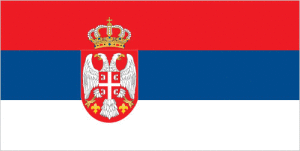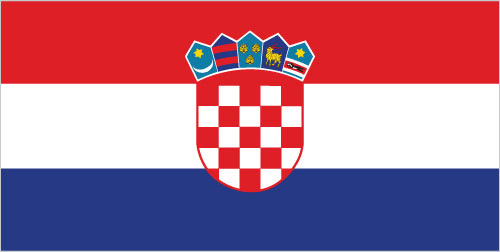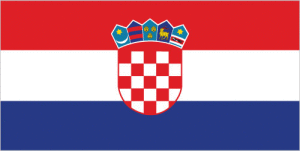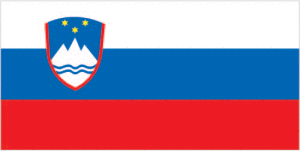Péter Lékó became the world’s youngest Chess Grand Master in 1994. Born in Yugoslavia, he was fourteen (a record at the time) when he won the title. Children could learn how to play chess at: Chess.

Flag of Serbia
Serbia celebrates National Day. Serbia has a complex history, belonging to other nations, including Yugoslavia. This European landlocked country is about the size of South Carolina. Over seven million people live in Serbia, and Belgrade is the capital. Its main agricultural products are wheat, maize, and sugar beets. Older children could learn more at: Serbia.
Croatia and Slovenia celebrate Independence Day. They both broke away from Yugoslavia in 1991.
Croatia is about the size of West Virginia. Croatia’s seacoast has a Mediterranean climate, and the interior has more of a continental climate. About four million people live in Croatia, and natural resources include oil and bauxite. Zagreb is the capital. Children could learn more at: Croatia.
Slovenia, according to the CIA World Factbook, is about the size of New Jersey. Slovenia, north of Croatia, also has a Mediterranean climate along its coast. Coal, lead, and zinc are natural resources. Almost two million Slovenians live in this small country. Ljubljana is the capital. Children could learn more about Slovenia at: Slovenia.

Flag of North Macedonia
North Macedonia celebrates Independence Day. North Macedonia peacefully gained its freedom from Yugoslavia in 1991. This land-locked country, about the size of Vermont, has dry summers and cold, very snowy winters. Over two million people live in Macedonia, and Skopje is the capital. Older children could learn more at: North Macedonia.

Flag of Croatia
Croatia celebrates Independence Day. In 1991 Croatia’s Parliament voted to sever ties to Yugoslavia. Bordering the Adriatic Sea, the country is slightly smaller than the state of West Virginia. About 4.5 million people live in Croatia, and Zagreb is the capital. Children could learn more at: Croatia.

